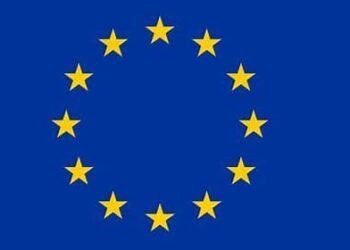Ghana’s producer price inflation (PPI) saw a significant decline in April 2025, falling to 18.5% year-on-year from 24.4% recorded in March 2025.
This development, according to the Ghana Statistical Service (GSS), reflects a cooling in the price pressures faced by producers across the economy, particularly in manufacturing, mining, and energy-related sectors.
The latest data shows that producers earned 0.8% less on average for their goods and services in April compared to March 2025, indicating a monthly deflation. This deflationary trend in producer prices, though moderate, is a signal that input cost pressures on producers are easing, potentially offering some relief to consumers downstream if the trend is sustained in coming months.
The Producer Price Index (PPI) measures the average change over time in the prices received by domestic producers for their output. It is a key economic indicator because it reflects the cost dynamics within the production side of the economy, which eventually feeds into consumer prices.
Manufacturing Sector Performance
Within the manufacturing sub-sector, which constitutes the largest share of the PPI basket, the average inflation rate was 20.8% in April. However, five of the 23 major manufacturing groups recorded inflation rates higher than the sector’s average.
The manufacture of basic metals posted the highest inflation rate among manufacturing groups at 38.0%. This was followed by the manufacture of motor vehicles, trailers, and semi-trailers at 35.8%. These elevated figures suggest that despite the broader decline in PPI, certain manufacturing activities continue to experience persistent input cost pressures, possibly due to global supply chain disruptions or high import costs for raw materials.
Conversely, the manufacture of coke and refined petroleum products registered the lowest inflation rate within the sector, recording a deflation of -1.6%. This decline may be attributed to easing crude oil prices on the international market or improved domestic refining efficiencies.
Mining and Quarrying Trends
The mining and quarrying sector, a key contributor to Ghana’s exports and government revenue, showed mixed inflation performance in April. The extraction of crude oil and natural gas recorded a steep deflation of -12.6%, a significant drop from the positive inflation rate of 2.5% recorded in March 2025. This 15.1 percentage-point fall underscores the volatility of global energy prices and their impact on Ghana’s upstream oil and gas segment.
In contrast, the mining of metal ores saw its inflation rate decrease slightly to 56.0%, down from 62.2% in March. Despite the drop, the figure remains relatively high, indicating strong price dynamics in the gold and bauxite mining segments. Activities related to mining support services posted an inflation rate of 66.0%, suggesting ongoing cost surges in logistical and technical services supporting mining operations.

Electricity and Gas Sub-Sector
The utilities segment also experienced varying inflation trends. Electricity generation, transmission, and distribution recorded an inflation rate of 5.5% in April 2025. This moderate increase may reflect relatively stable tariffs and production costs.
Meanwhile, the manufacture and distribution of gas saw a deflation of -0.9%. This mild drop points to possible reductions in input costs or improved supply mechanisms in Ghana’s domestic gas distribution network.
Meanwhile, the fall in producer inflation is a positive signal for the Ghanaian economy, especially in a period marked by tight fiscal policies and cautious optimism for economic recovery. A sustained decline in PPI could eventually ease consumer inflation, which remains a major concern for policymakers and households alike.

However, the mixed performances across sectors suggest that inflationary pressures remain unevenly distributed. Key manufacturing and mining sub-sectors still face high inflation, which may affect production costs and export competitiveness. For businesses, especially those in high-inflation categories, operational efficiency and input cost management remain crucial.
For policymakers, the April figures provide a strong basis for evaluating the effectiveness of recent monetary and fiscal measures. It also emphasizes the need for targeted interventions in sectors still experiencing cost surges.
READ ALSO: Bond Market Activity Rises 25.14% to GH¢1.41bn Amid Investor Caution



















